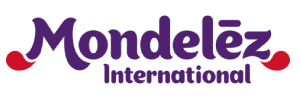The Indian branded luggage industry stands at the threshold of a promising future, driven by shifts in consumer habits, rising affluence, and the burgeoning e-commerce sector. Among the industry giants, one such key player, holds the potential to emerge victorious by retaining its market share. The landscape of the market is undergoing significant transformation, propelled by the growing emphasis on travel and tourism. This surge in demand for luggage mirrors the changing lifestyle patterns, with travel becoming an integral part of the masses' lives. As disposable incomes soar, consumers are increasingly gravitating towards branded luggage, transforming it from a mere utility item into a lifestyle statement. Recognizing this shift in consumer behavior, companies in this industry are realigning their product portfolios to cater to evolving demographics. Despite the upward trajectory of branded luggage sales, a substantial portion of the market remains fragmented and unorganized. Effective product positioning is crucial for nurturing the growth of the branded luggage segment. Moreover, educating consumers about the quality and features of branded luggage is pivotal in leveraging this emerging opportunity.
Recognizing the vast potential of online marketplaces, companies have expanded their presence across major e-commerce platforms, resulting in significant gains in the online sphere. The advent of online e-commerce has provided a unique opportunity for branded luggage manufacturers to penetrate the unbranded segment of the market. In the online realm, customers lack the ability to physically inspect products, relying instead on trust and reputation. This scenario has proven advantageous for branded luggage companies, as their legacy of durability and reliability instills confidence among consumers. The implementation of GST has also played a role in leveling the playing field by reducing price differentials between branded and unbranded products. With small brands now compelled to adhere to GST norms, the cost gap has narrowed, indirectly benefiting established brands.
Company Overview:
Since its establishment in 1971, this company has successfully distributed over a hundred million units worldwide through its extensive network of more than 10,000 retail outlets and 1,300 retailers across 27 countries. This remarkable achievement can be attributed to the company's diverse product portfolio, featuring multiple brands, tailored to meet the needs of various consumer segments. With the Indian luggage sector projected to grow by over 8.3% in the next five years, poised for a growth rate of at least 10%, capitalizing on the traditional oligopolistic structure of the organized luggage industry in India and in this progress, one of the main factors is Online eCommerce store.
Competitor:
American Tourister, Louis Vuitton, Wildcraft, Zara
Challenges:
- Despite holding over 50% market share in India, this brand struggles to connect with the affluent new class due to ineffective product positioning.
- The perception as an old-fashioned Indian brand clashes with the desire of younger consumers for stylish, trendy solutions, necessitating a balance between reliability and modernity.
- While excelling in the hard luggage segment, its soft luggage offerings fail to garner the same level of consumer appreciation, posing a challenge to establish a presence in this space.
- The diminishing perception of luggage as purely utilitarian requires this brand to reposition its product portfolio towards lifestyle-oriented offerings.
- A leadership crisis in early 2015 further exacerbated challenges, particularly in competing with younger brands.
Strengths:
- Strong brand equity with a considerable base of contented customers.
- Holds the position of Asia's largest and the world's second-largest player in the luggage industry.
- Boasts efficient manufacturing facilities spread across various locations.
- Offers an extensive range of products to cater to diverse segments of demand.
Weakness:
- Hindered by a delayed response to evolving market demands.
- Struggles to break free from the allure of established brand performance.
- Struggles to fully capitalize on the potential of the e-commerce industry.
Key Points:
Company’s presence on e-commerce platforms facilitates direct interaction with customers, allowing the brand to gather valuable feedback, understand market trends, and tailor its offerings to meet evolving demands. Through strategic digital marketing initiatives and targeted promotions, the company maximizes its online presence, driving sales and fostering brand loyalty among online shoppers.
In essence, the company's embrace of e-commerce represents a pivotal step towards adapting to the digital era and harnessing the vast opportunities presented by online retail. By embracing innovation and leveraging the power of e-commerce platforms, this brand continues to elevate its position as a leading player in the luggage industry while meeting the evolving needs of today's discerning consumers.
Conclusion:
The strategic positioning of this brand and its sub brands has effectively differentiated them from competitors. By tailoring each brand to specific market segments, it addresses the distinct needs of diverse consumer groups. This strategic approach enables the organization to navigate challenges such as being perceived as an outdated Indian brand. Additionally, the introduction of soft luggage to the product portfolio marks a significant step away from its traditional focus on hard luggage. Some sub brands have particularly resonated with affluent businessmen and young entrepreneurs, expanding its reach into higher-income households. Furthermore, by partnering with major e-commerce players, it taps into the tech-savvy consumer base of young India, further enhancing its market presence.

 Web and Full Stack
Web and Full Stack CMS and Frameworks
CMS and Frameworks Online Marketing
Online Marketing Cloud Services
Cloud Services eCommerce
eCommerce Mobile
Mobile
























